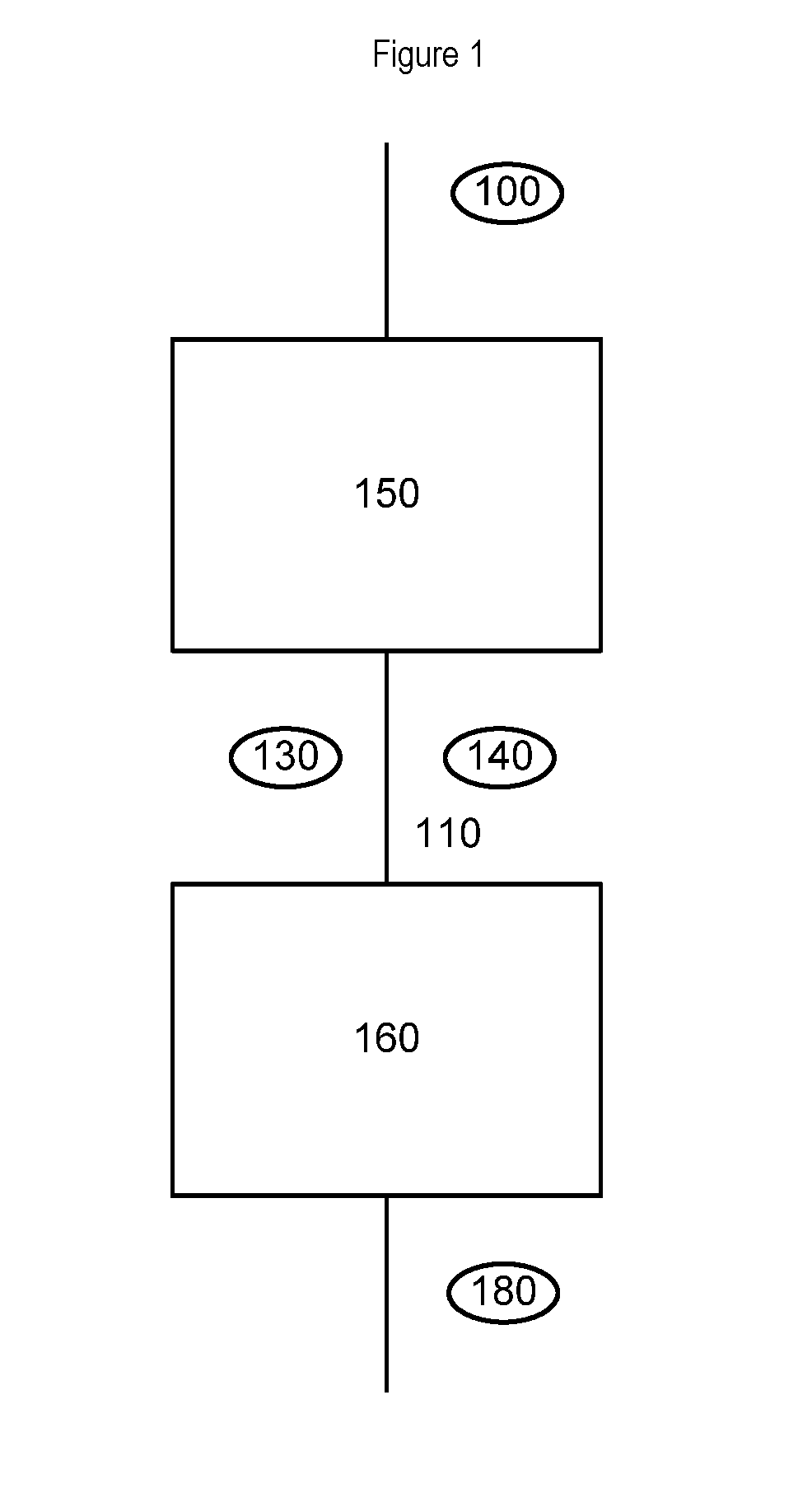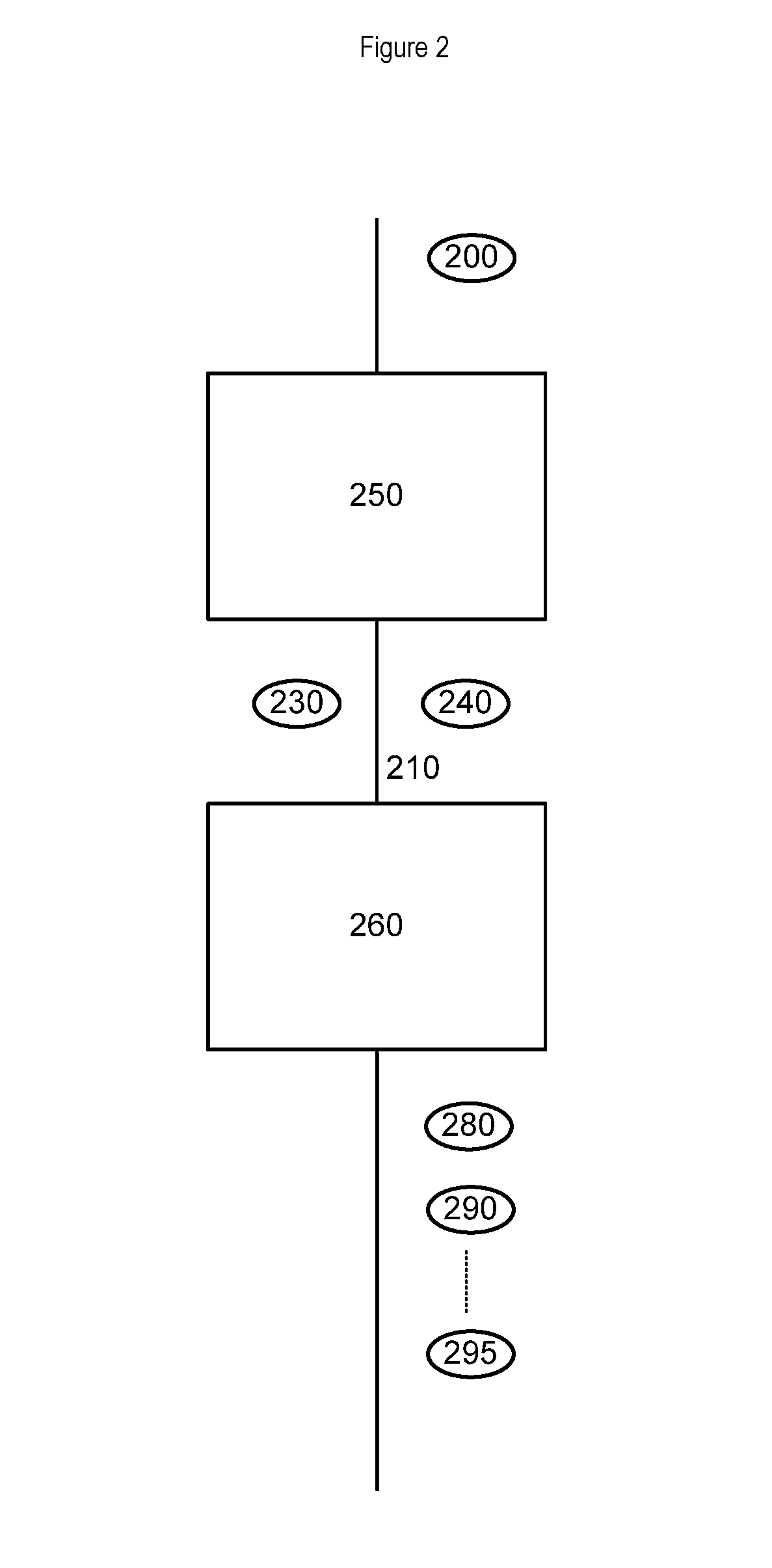Cloud encoding system
a cloud and encoding technology, applied in the field of cloud encoding systems, can solve the problems of scarce efficiency, n-times greater transmission resources, and no common standard for serving all the devices connected to the network, so as to improve reduce bandwidth, and optimize computing and data transmission resources
- Summary
- Abstract
- Description
- Claims
- Application Information
AI Technical Summary
Benefits of technology
Problems solved by technology
Method used
Image
Examples
first embodiment
[0066]As can be seen in FIG. 2, according to an optional variant of the first embodiment, the system can be configured in such a way that the second encoding means 260 produces a multitude (plurality) of second encodings 280, 290, . . . 295. The characteristics (such as, for example, one or more among: the bit rate, resolution, format or other characteristics) of each of the second encodings obtained from the second encoding means 260 are determined by the configuration parameters which may be contained in the encoding information. It should be noted that each of the encoded signals produced is characterised by a corresponding predetermined property, wherein the property indicates the characteristics or attributes of the second encoded signal that is output, such as, for example, one or more of the following: desired resolution, level of compression, bit rate, format, etc. . . .
[0067]In an optional variant of the present invention, the second encoding means 160 carries out one of th...
third embodiment
[0073]FIG. 4 shows a block diagram according to the present invention, where a device 350 encodes an ungrouped signal 310 into a grouped signal 390, said ungrouped signal 310 comprising at least a video service. The device 350 comprises encoding means 355 configured to execute a first encoding of said ungrouped video signal 310 into a first encoded grouped signal and to associate encoding information with said first encoded signal. The encoding information contains information obtained during the first encoding process and relating thereto and can contain configuration information for the execution of a second encoding by a further device. The encoding information can optionally contain information relating to the property of the second encoded signal that is output (or each property corresponding to a plurality of second encoded output signals). The device 350 further comprises a transmission means 370 for transmitting said first encoded signal and encoding information to a further...
PUM
 Login to View More
Login to View More Abstract
Description
Claims
Application Information
 Login to View More
Login to View More - R&D
- Intellectual Property
- Life Sciences
- Materials
- Tech Scout
- Unparalleled Data Quality
- Higher Quality Content
- 60% Fewer Hallucinations
Browse by: Latest US Patents, China's latest patents, Technical Efficacy Thesaurus, Application Domain, Technology Topic, Popular Technical Reports.
© 2025 PatSnap. All rights reserved.Legal|Privacy policy|Modern Slavery Act Transparency Statement|Sitemap|About US| Contact US: help@patsnap.com



